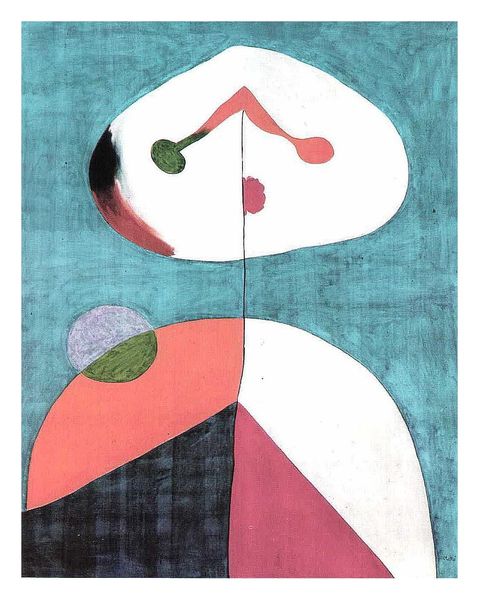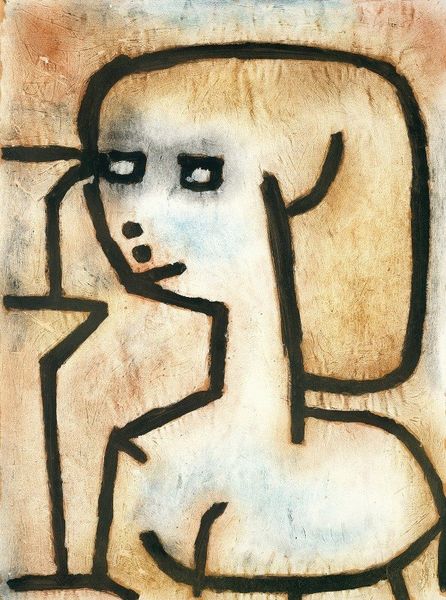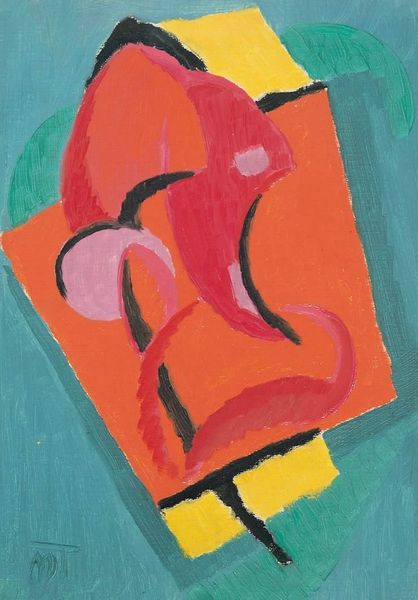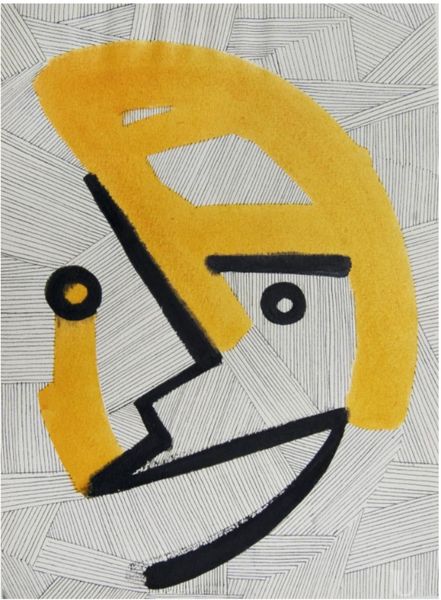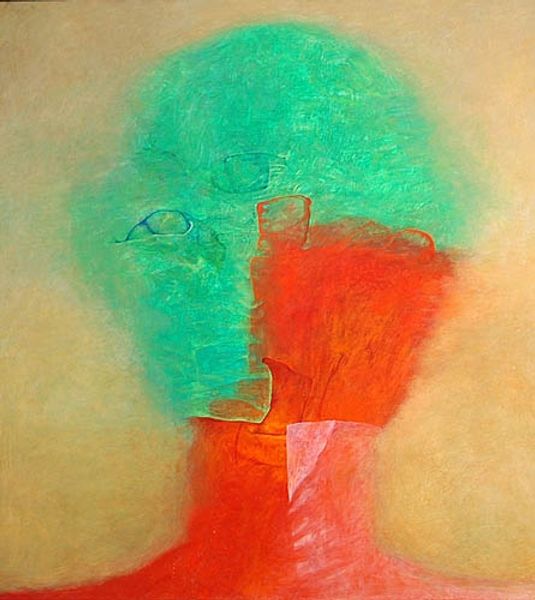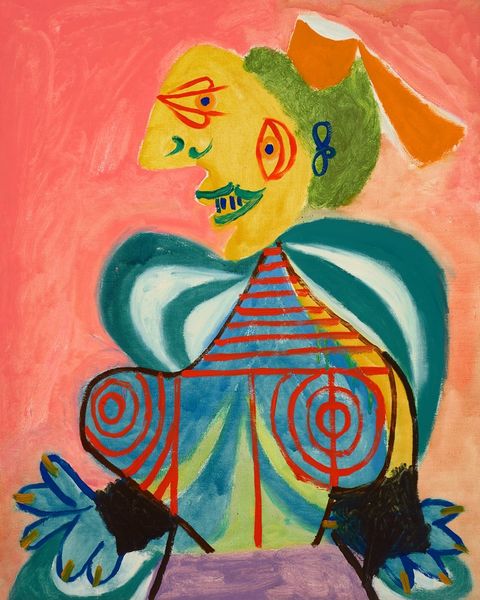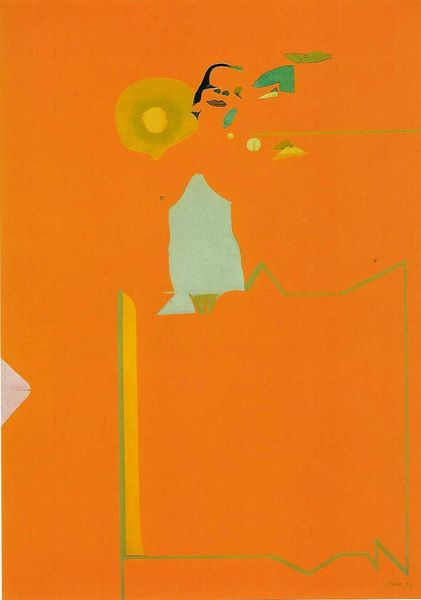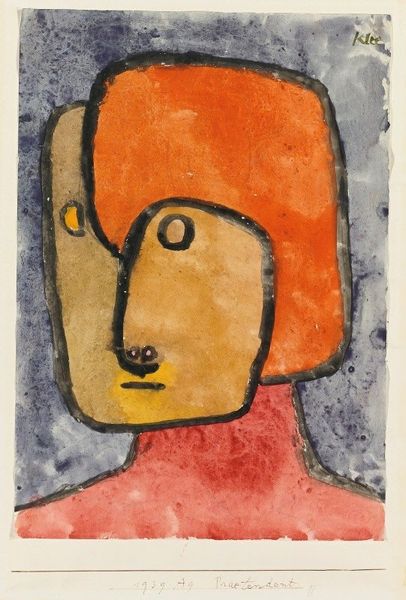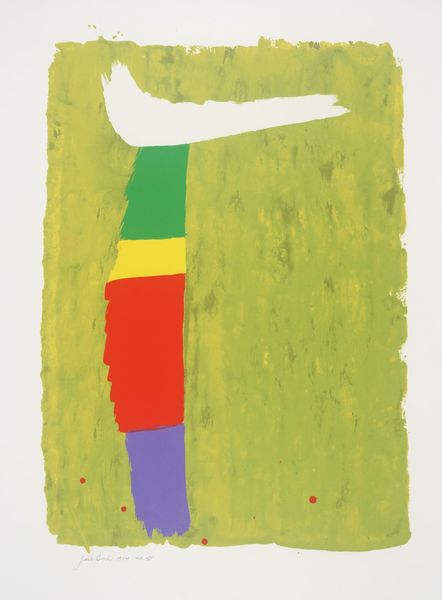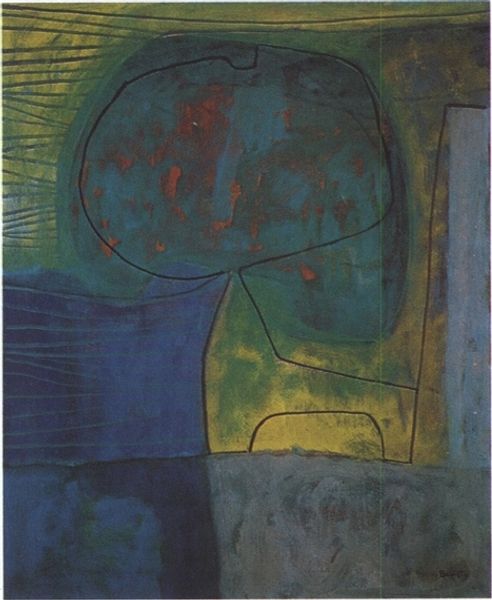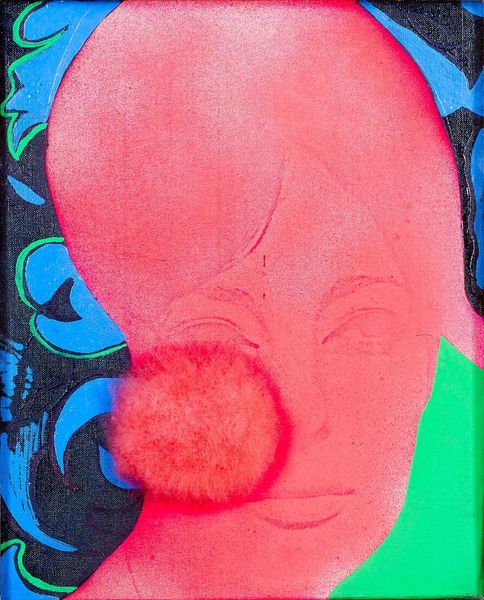
watercolor
#
water colours
#
figuration
#
abstract
#
watercolor
#
expressionism
#
abstraction
#
watercolour illustration
#
modernism
Copyright: Public Domain: Artvee
Paul Klee made this watercolour, 'Kleiner Gartengeist', likely in the 1920s or 30s when he was teaching at the Bauhaus, and playing with ideas about colour and form. I think what’s beautiful here is the way he allows the paint to bloom and spread, creating these soft, translucent layers. It's all about process. Look at the way the yellow ochre of the little garden ghost's head bleeds into the surrounding colours, how the green washes form a kind of halo. The watercolour is so thin, it's like a memory of colour rather than a solid object, so it invites the viewer into a space of imagination. The two red dots for eyes, they stare right through you! Klee reminds me of Miro in his use of playful forms, but also Agnes Martin in the delicacy and subtlety of his touch. It is this balance between playfulness and rigor that makes his work so enduring. A painting like this embraces a kind of knowing ambiguity, it offers no fixed meanings, only possibilities.
Comments
No comments
Be the first to comment and join the conversation on the ultimate creative platform.
